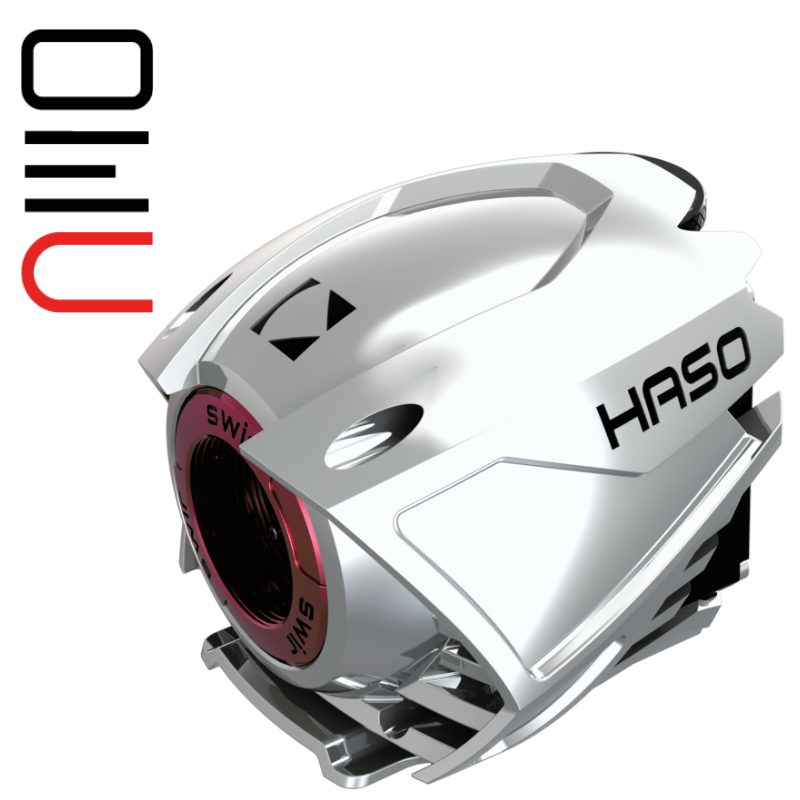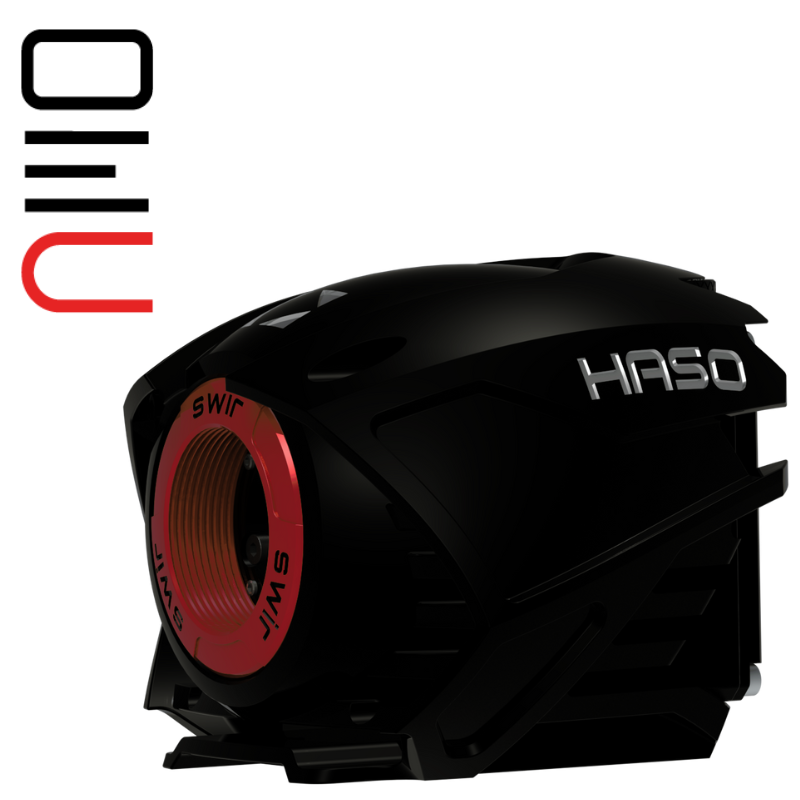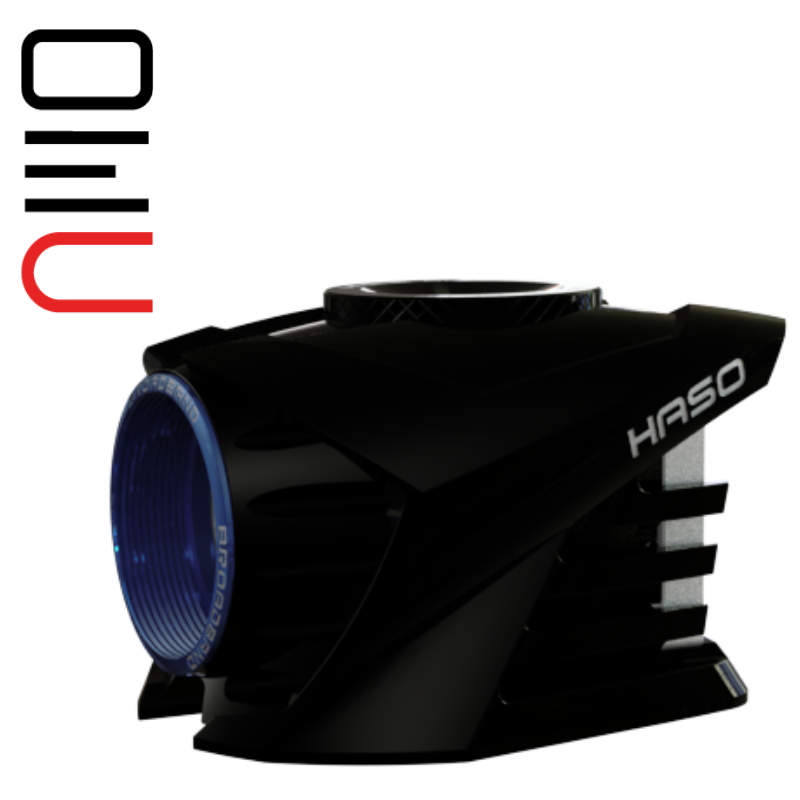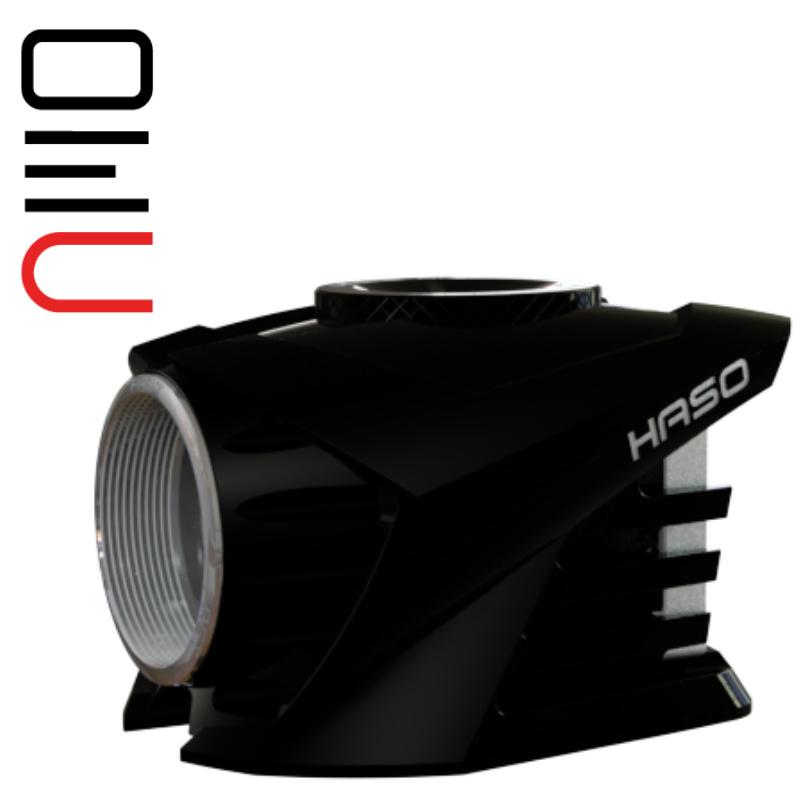Wavefont sensors: General Overview
A wavefront sensor is a optical device that plays a crucial role in measuring and analyzing the physical shape of light waves. Integral to fields ranging from astronomy to ophthalmology, these sensors detect and correct aberrations in optical systems, enhancing image clarity and focus.
In this page we will try to cover every thing related to wavefront sensors starting by the most asked question in the topic :
What is Wavefront Measurement?
Wavefront measurement is a critical process in optical metrology, where the shape and characteristics of a light wave as it propagates through or reflects from an optical system are analyzed. This measurement is crucial for understanding and correcting aberrations in various optical systems.
Wavefront measurement is an integral part of optical metrology, focusing on key aspects such as phase and intensity analysis. This involves examining both the shape and orientation (phase) of the wavefront and its brightness or amplitude (intensity). A critical function of wavefront measurement is the identification of optical aberrations, deviations from the ideal wavefront shape. Among the techniques employed, Shack-Hartmann Wavefront Sensing is notable, especially in relation to Imagine Optic’s product range. This method utilizes an array of lenslets to analyze the wavefront meticulously. The significance of wavefront measurement in optical systems cannot be overstated, as it ensures quality assurance and aids in system optimization. It plays a pivotal role in aligning and enhancing the performance of complex optical systems. Imagine Optic, a leader in this field, specializes in advanced wavefront sensors like the HASO series, providing precise and accurate wavefront measurements. Their technology is widely applied in areas such as laser metrology, adaptive optics, and scientific research, where exact wavefront measurement is critical. In summary, wavefront measurement is a cornerstone in the development and refinement of optical systems, with companies like Imagine Optic leading the charge with their advanced solutions for dependable wavefront analysis.
How Does a Wavefront Sensor Work?
A wavefront sensor is an instrument used in optical metrology to measure the shape and phase of an optical wavefront. Understanding how these sensors work is crucial for applications ranging from astronomy to vision correction. Let’s break down their functionality:
Imagine Optic plays a pivotal role in the process of wavefront sensing, a sophisticated technique essential for optimizing and correcting optical systems across various fields. This process begins with capturing the wavefront, where sensors developed by Imagine Optic, such as their advanced HASO wavefront sensors, start by capturing an incoming light wave. This light wave, having passed through or reflected off an optical system, often carries critical information about the aberrations and distortions encountered along its path.
The next step involves wavefront analysis. Once the light is captured, Imagine Optic’s sensors analyze its wavefront, which is essentially a 3D map of the light’s phase and intensity distribution. These sensors measure deviations from a reference wavefront, the expected shape if the light had propagated without any disturbances, allowing for precise detection of aberrations.
Different types of wavefront sensors are employed in this process. The Shack-Hartmann Sensor, a widely-used type, involves an array of lenslets (small lenses). Imagine Optic utilizes this design, where each lenslet focuses a portion of the incoming wavefront onto a detector. The displacement of these focal spots from their ideal positions is measured to determine the local slope of the wavefront. Alternatively, the Pyramid Sensor, another type employed in the field, uses a pyramid-shaped prism to split the wavefront into several beams for analysis.
Data processing is a crucial step where Imagine Optic’s sensors excel. The sensor converts the physical displacements or intensity variations into digital data, which is then processed using sophisticated algorithms. This processing reconstructs the wavefront, highlighting any aberrations or distortions.
The final output is a detailed map or representation of the wavefront, showing how it has been altered by the optical system it passed through. This information is crucial for correcting optical errors in systems like telescopes, lasers, or even the human eye.
What is a Wavefront Sensor Used For?
Wavefront sensors are integral tools in optical science and engineering, used for measuring and analyzing the wavefront of light beams. Their applications are diverse, covering various fields where precise optical measurements are crucial. Here are some key uses of wavefront sensors:
- Adaptive Optics in Astronomy: In telescopes, wavefront sensors correct for atmospheric distortion, enhancing the resolution and clarity of astronomical images. They enable ground-based telescopes to achieve clarity comparable to space-based telescopes by dynamically adjusting the mirror shapes to compensate for atmospheric turbulence.
- Ophthalmology and Vision Science: Wavefront sensors are used in diagnosing and treating vision problems. They measure aberrations in the eye, leading to customized vision correction solutions, like LASIK surgery, for better visual acuity.
- Laser System Optimization: In laser applications, these sensors help in characterizing and improving laser beam quality. They are crucial for aligning laser systems and ensuring peak performance, especially in high-precision environments like scientific research or industrial manufacturing.
- Optical Testing and Metrology: Wavefront sensors are used to test and analyze optical components like lenses and mirrors. They ensure the quality of optical manufacturing, detecting imperfections that might affect the performance of the optical system.
- Microscopy and Imaging: In microscopy, wavefront sensors enhance image quality by correcting optical aberrations. They are particularly useful in advanced microscopy techniques, such as confocal microscopy, improving the resolution and depth of field.
- Research and Development: They are extensively used in scientific research to explore new optical phenomena and develop cutting-edge optical technologies. Wavefront sensors are instrumental in experimental physics, material science, and other fields requiring precise optical measurements.
- Industrial Applications: In industries, these sensors aid in quality control processes, ensuring the accuracy and precision of optical components used in various products.
- Defense and Security: Wavefront sensors are also used in high-resolution imaging systems for surveillance and reconnaissance, aiding in national security.
- Telecommunications: They play a role in the development and maintenance of optical communication systems, ensuring the integrity of fiber optic networks.
Principle of Shack-Hartmann Wavefront Sensor
The Shack-Hartmann Wavefront Sensor is a critical tool in the field of optical metrology, used for measuring the wavefront of light. Understanding its principle involves delving into its unique design and how it functions to provide precise wavefront measurements.
- Basic Concept: The Shack-Hartmann sensor operates on a unique principle. It breaks down the incoming wavefront into many smaller segments, analyzing each segment individually. The sensor comprises two key components: a lenslet array and a wavefront detector. The lenslets are small lenses, while the detector is typically a Charge-Coupled Device (CCD) or a Complementary Metal-Oxide-Semiconductor (CMOS) sensor.
- Functioning of Lenslet Array: In the functioning of the lenslet array, each lenslet is strategically placed in the path of the incoming light wave. These lenslets focus parts of the wavefront onto the detector. In an ideal optical system, these focal points would form a regular grid on the detector, allowing for precise measurement.
- Detection of Wavefront Distortions: The detection of wavefront distortions is a critical function of the Shack-Hartmann sensor. If the incoming wavefront is distorted due to aberrations, the focal points deviate from their expected positions on the grid. These deviations provide essential information about the slope of the wavefront at each lenslet, indicating the presence and nature of aberrations.
- Wavefront Reconstruction: Wavefront reconstruction is achieved by analyzing the pattern of deviations across the lenslet array. Sophisticated mathematical algorithms convert these deviations into a full wavefront map. This map is a detailed representation of the aberrations present in the wavefront, providing vital insights for correction and analysis.
- Applications of the Data: The detailed wavefront map produced by the Shack-Hartmann sensor has practical applications in correcting aberrations in optical systems. This correction can be achieved by adjusting the shape of mirrors or lenses, or by processing images to remove distortions, enhancing the overall quality and functionality of the optical system.
- Advantages of Shack-Hartmann Sensing: The Shack-Hartmann method is highly regarded for its simplicity, robustness, and reliability. It is capable of measuring a wide range of aberrations, from simple issues like focus and tilt to more complex higher-order distortions, making it a versatile tool in optical metrology.
- Use in Diverse Fields: The Shack-Hartmann technology finds applications in a variety of areas. In astronomy, it is used for adaptive optics in telescopes. In vision science, it assists in assessing and correcting eye aberrations. It’s also crucial in testing and aligning optical systems in various scientific and industrial contexts.
Shack-Hartmann wavefront sensor is a cornerstone technology in modern optics. Its precise measurement and mapping capabilities make it indispensable in both research and practical applications across various scientific and industrial fields.
Shack-Hartmann Technique: Detailed Description and Comparison
The Shack-Hartmann technique is a sophisticated method used in optical metrology for analyzing and measuring wavefronts with high precision. This technique has unique attributes that make it highly effective and reliable in various optical applications.
Detailed Description of the Shack-Hartmann Technique
- Lenslet Array: The heart of the Shack-Hartmann sensor is its lenslet array. This array consists of numerous small lenses, each focusing a part of the incoming wavefront onto a detector (like a CCD camera).
- Focal Spot Analysis: As the wavefront passes through these lenslets, each one creates a focal spot. In an ideal, aberration-free wavefront, these spots form a regular grid pattern on the detector. However, any distortion in the wavefront alters this pattern.
- Wavefront Reconstruction: The sensor calculates the deviation of each focal spot from its ideal position. These deviations correspond to the local gradient or slope of the wavefront at each lenslet. By mapping these deviations across the entire array, the overall shape and distortion of the wavefront can be reconstructed.
- Data Processing: Sophisticated software algorithms process this data to create a detailed wavefront map. This map is crucial for identifying and quantifying optical aberrations and for guiding corrective measures in optical systems.
Comparison with Other Methods
The Shack-Hartmann technique has several advantages over other wavefront sensing methods:
- Accuracy and Reliability: The Shack-Hartmann sensor provides highly accurate and reliable measurements of wavefront distortions. Its ability to map the entire wavefront with a high degree of precision makes it a trusted choice in critical applications.
- Robustness: Compared to other methods like interferometry, the Shack-Hartmann technique is less sensitive to environmental vibrations and disturbances. This robustness makes it suitable for a wider range of environments, including industrial and outdoor settings.
- Simplicity and Versatility: The design and operational principles of the Shack-Hartmann sensor are relatively straightforward, making it easier to integrate into various optical systems. Its versatility is evident in its wide range of applications, from astronomy to ophthalmology.
- Dynamic Range: Shack-Hartmann sensors typically have a larger dynamic range compared to other wavefront sensing techniques. This allows them to measure a wider range of aberrations, from very small to quite large, without the need for complex adjustments.
- Real-Time Measurement: The technique enables real-time wavefront measurement, which is critical in adaptive optics applications where fast feedback and correction are necessary.
In summary, the Shack-Hartmann technique stands out for its precision, reliability, and versatility. Its ability to provide accurate, real-time wavefront measurements in a robust and simple package makes it a preferred method in various optical metrology applications.
Applications of Shack Hartmann Wavefront Sensor
The Shack-Hartmann Wavefront Sensor (SHWFS) has a broad range of applications across various fields, leveraging its ability to accurately measure and analyze optical wavefronts.
- Astronomy: In astronomy, SHWFSs are crucial for measuring and optimizing telescopes. They help in characterizing the optical systems of large telescopes, ensuring high-quality imaging of celestial bodies.
- Ophthalmology and Vision Science: One of the most widespread uses of SHWFSs is in the field of ophthalmology, especially in supporting laser refractive surgery. These sensors are used to measure eye aberrations, playing a vital role in procedures like LASIK. They help in diagnosing and treating complex refractive errors, improving the precision and outcomes of eye surgeries.
- Laser Beam Characterization: SHWFSs are employed to measure the wavefronts of laser beams. This is essential for ensuring the quality and performance of laser systems, which are used in a wide array of industrial and scientific applications.
- Clinical Applications: In clinical settings, SHWFSs are used in auto-refraction for spectacle and contact lens fitting, diagnostics of eye conditions like kerataconus and ectasia, and in various research applications. They provide critical data for customizing vision correction solutions and for understanding the dynamics of eye movement and accommodation.
- Adaptive Optics: SHWFSs are commonly used in adaptive optics systems. These systems dynamically adjust the optics of instruments like telescopes or microscopes to compensate for distortions (like atmospheric turbulence in the case of ground-based telescopes), enhancing image quality.
- Optical Testing and Metrology: They are also vital in testing and analyzing optical components, like lenses and mirrors, ensuring these components meet the required quality standards.
The Shack-Hartmann Wavefront Sensor, with its precise measurement capabilities, plays an essential role in these fields, contributing significantly to advancements in optical technology and vision science.




